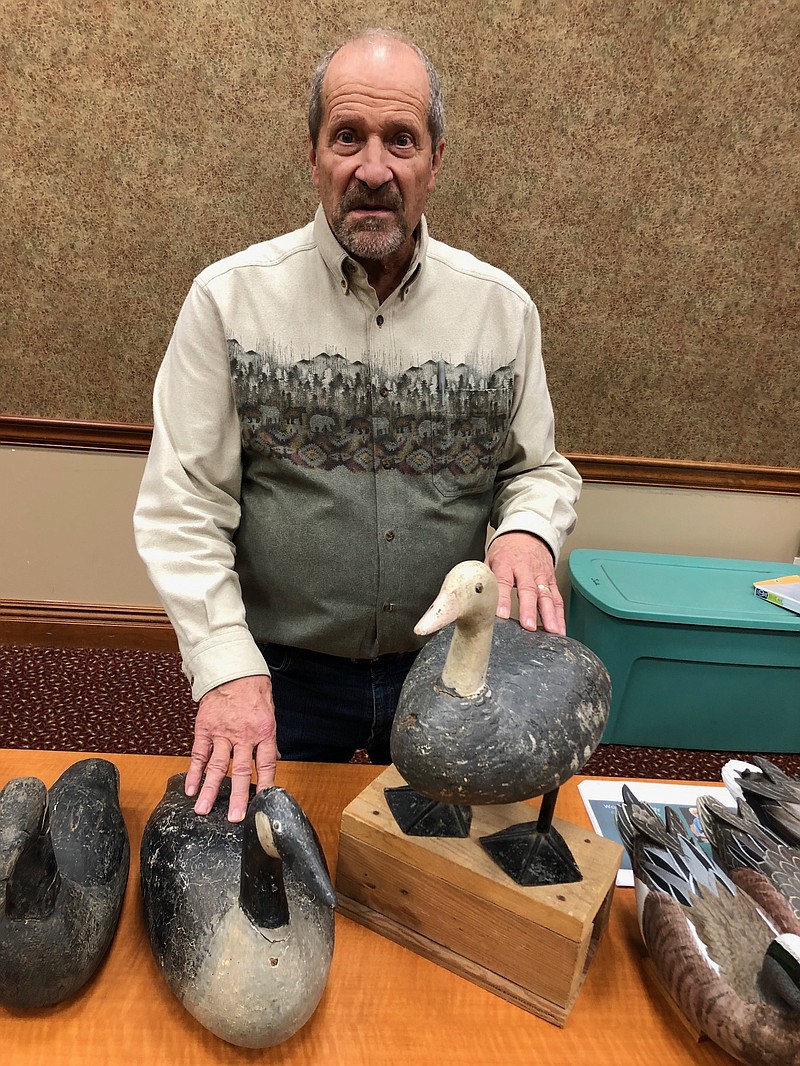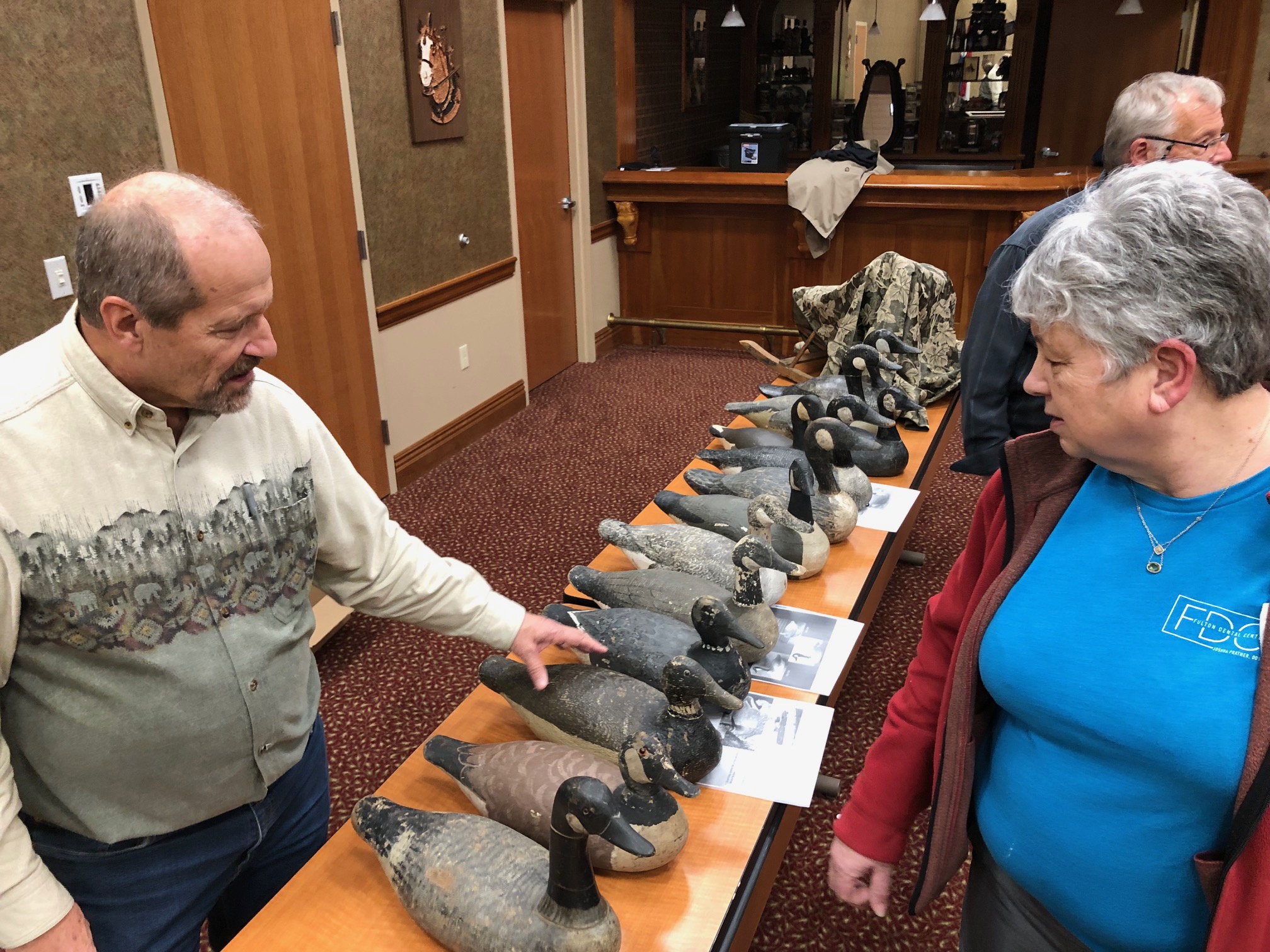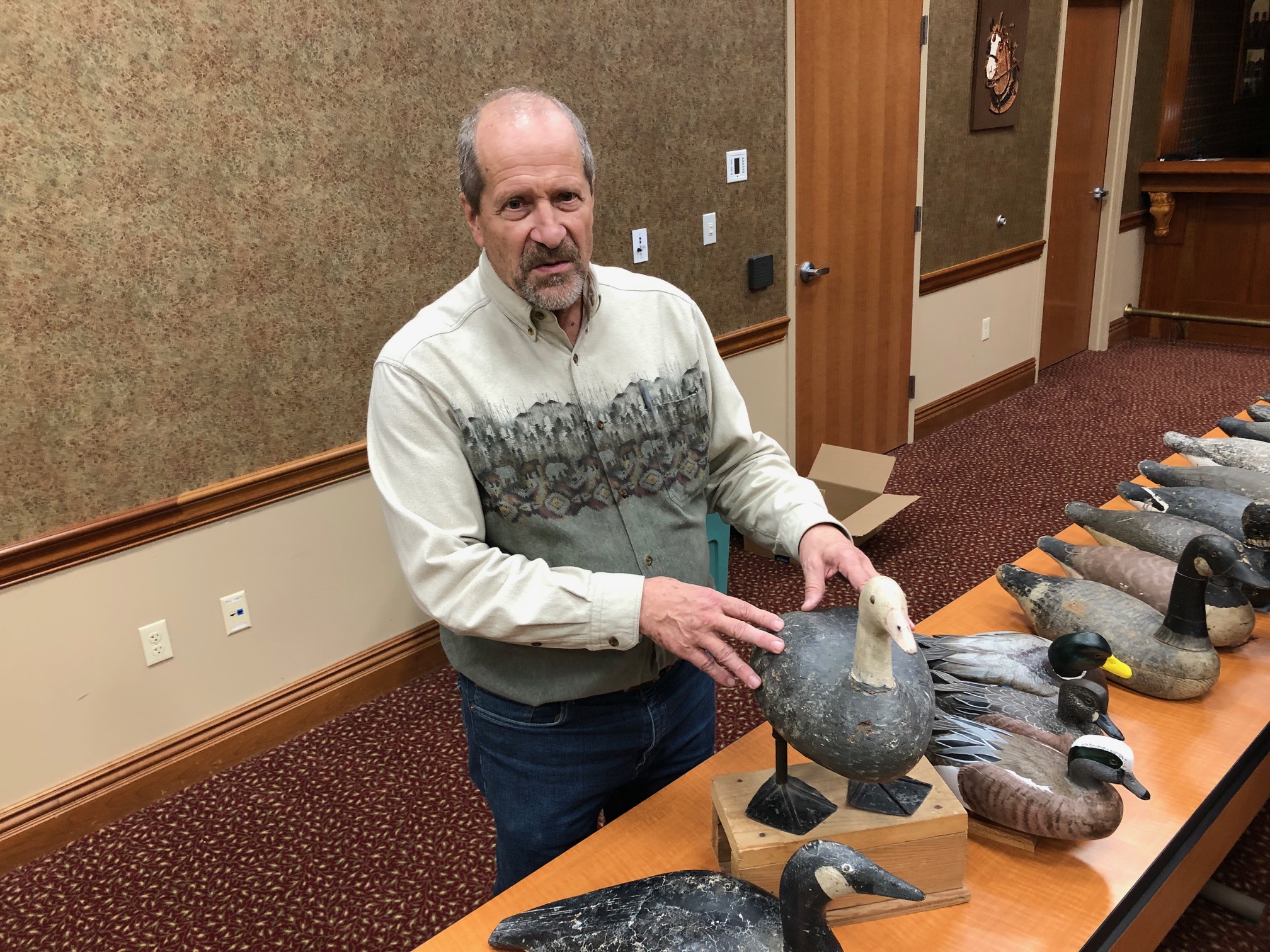Despite limited numbers of customers close by, three Jefferson City factories produced products that were very much in demand elsewhere in the first half of the 20th century.
The product evolved from saddle tree manufacturing.
The River City Collectors Guild held a historic goose decoy program Wednesday evening.
The program focused on Missouri's history of goose decoys, and emphasized decoys made in Jefferson City.
Greg Renner of Columbia and Randy Crawford of New Bloomfield shared examples of their collections from the early- to mid-20th century.
They discussed decoys produced between 1921 and 1945. Renner said duck decoys are common.
"The goose is just a little more limited group," Renner said. "Goose decoys are just not as common as duck decoys."
Stories about wooden geese are still being uncovered, he said. There are still experts who struggle to identify -- who on the world stage made them?
"People don't have it figured out. Nobody was writing this down at the factory," Renner said. "Here we are 70 or 80 years later trying to figure out who did what."
In the '20s and '30s, there wasn't much goose hunting in Missouri, Crawford said. Maybe there was some along the rivers, he continued.
Local decoy manufacturing started with the Sullivan Saddle Tree Company -- a Missouri prison industry that made saddle trees. After World War I, people stopped riding horses.
"(Sullivan) started making automobile bumpers. They made these 'Hickory Hitter' car bumpers," Renner said.
The man running the business was a big hunter and thought he could make decoys.
Wednesday night's speakers offered displays of "molds" used for geese parts. Craftsmen used duplicating lathes to shape the parts.
Sullivan was probably the first company to use a cast-iron mold. The mold didn't wear down or break like a wooden mold. Renner demonstrated how a Kansas City company manufactured blue morph snow goose decoys in the early 20th century.
James Hays had a company in Jefferson City that made early goose decoys. Renner pointed out a decoy that had apparently been modified.
"Everything about this is right, except from about here up," he said and indicated a point just below the decoy's head. "From here down, it seems like it should be a Hays."
There are no photos, and catalogs only had illustrations. Two years in, Hays changed his decoys. In the catalogs the company put out, half of the decoys were first generation and half were second. They were very different.
About four years in, Hays Decoy Co., sold the factory -- building, equipment and all -- to the Gundelfinger family. Gundelfinger made ducks, geese and outdoor furniture -- anything that was made of wood. It went bankrupt and then the Benz Factory began making geese in Jefferson City.



